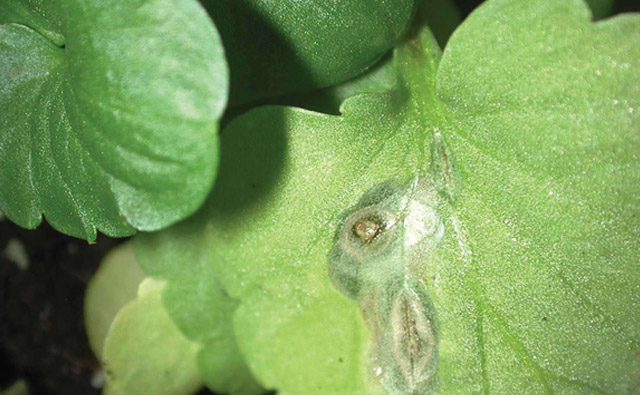Industry News, Fungicides, Agriculture & Feed
8 Tips For Getting The Most From Your Fungicides

Industry News, Fungicides, Agriculture & Feed

Image: Margery Daughtrey
Application rates, intervals and timing can make a big difference in getting the most from your fungicides. There are many factors, however, that growers should be aware of to ensure the efficacy of fungicide application. Read about some of the important considerations in this advice from Cornell University’s Senior Extension Associate Margery Daughtrey.
“It’s all about the label,” Daughtrey says. “They are hugely informative, with very detailed information that should be followed.”
It is especially important to use full label rates with the systemic materials, which have only a single-site mode of action. If you try to use less of these materials in your tank, less than the label calls for, you will speed up the process by which the target pathogen develops resistance to that chemical.
“Think of this when you are using a strobilurin, for example, against a powdery mildew or a downy mildew,” Daughtrey says. “I prefer high or medium rates rather than low labeled rate in such a case.”
It can be helpful to get a thorough fungicide coating onto the foliage before the canopy fills in.
“Treatments for botrytis control on poinsettias or powdery mildew control on gerberas, for example, should be started before plants are crowded,” Daughtrey says. Ideally, of course, the crop never gets too crowded for adequate spray contact, she adds.
There are obvious consequences to applying too little fungicide, but there are also problems associated with over-application. Applying too many times means added cost and an increased likelihood of phytotoxicity. Applying too infrequently will give the fungicide time to wear off between applications, which can result in selecting for resistance in the pathogen population.
Contact materials are terrific for giving disease management without danger of resistance development, Daughtrey says. She cites mancozeb as an example. It is very good against downy mildew and rust diseases.
“While perfect coverage is something to aspire to, it can never be achieved, so it is a good practice to alternate mancozeb with systemic materials that control the same disease.
“One difference between a contact action material and a systemic material is that with a contact material, you need good, complete coverage on the underside of the leaves. Applications at a high enough pressure to disturb the leaves are advantageous.”
> When used to control most diseases, it is not easy for a grower to evaluate if they are using fungicides properly or if they are using the right fungicides.
“Powdery mildew is an exception, because the fungus is quite apparent,” Daughtrey says.
> To evaluate a potential change in fungicide practice, growers should ask one question at a time and treat half their block in the usual fashion, and treat the other half with a different rate or interval.
> According to Daughtrey, the proper timing for a powdery mildew treatment would be regular protective treatments as soon as the disease is apparent anywhere in the crop.
> “Powdery mildew can progress rapidly, so scouting can save a grower a lot of woe when it comes to powdery mildew,” she says.
Biological fungicides are products based on micro-organisms to control fungal diseases, bacteria and nematodes. Their application may require attention to time of day or formulation demands. Be sure to know how the growing environment affects biofungicides’ efficacy. Daughtrey says that in her experience, chemical fungicides perform well across a broad range of environmental conditions, while certain biologicals can require keeping their environment moist after application.
While time of day that a fungicide is applied probably doesn’t affect a chemical’s effectiveness, it can affect the potential for phytotoxicity. Daughtrey recommends using fungicides early enough in the day so that the spray dries promptly. Delayed drying increases the potential for injury to the plant tissue with some materials.